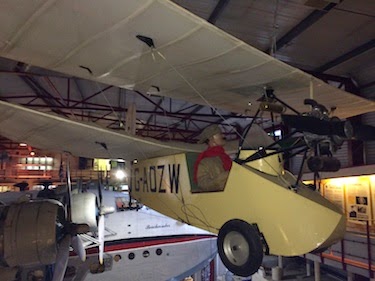 |
| The Flying Flea, A 1930’s Home-Built Kit Airplane |
For all you airplane buffs…
One of the top attractions in Southampton (according to TripAdvisor) is the Solent Sky Aviation Museum. This small museum (about the size of a single, small hangar) is jam-packed with airplanes, engines, uniforms, and artifacts of bygone races, awards, and trophies for breaking speed records during aviation’s formative years in the early 20th century. As the museum is proud to point out, this area of south-central England played a noteworthy role in the development of the aviation industry, and many of the developments from the region have found their way into this very manageable museum (allow an hour to ninety minutes to tour, a bit longer if you’re really into airplanes).
The (literal) centerpiece of the museum is a huge airplane called the Beachcomber. This 4-engine high-wing airplane, more formerly known as a Short Sandringham, was an amphibious passenger plane built during the 1940’s. During WWII, the two decks of the stubby fuselage were outfitted with benches for carrying troops and saw use mainly in Britain’s African campaigns. After the war, compartments with comfy chairs replaced the benches, making the dark-wood passenger cabin look sort of like a first class train coach. Civilian passenger use phased out in Europe in the early 1950’s, but continued in South America for another decade.
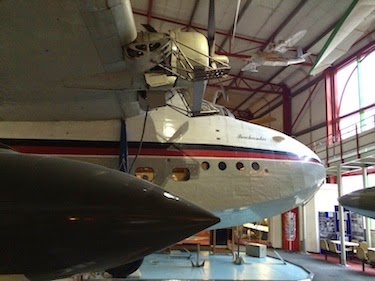 |
| The Beachcomber |
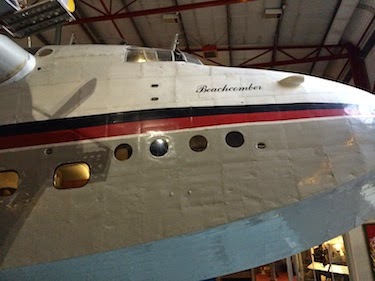 |
| The Beachcomber |
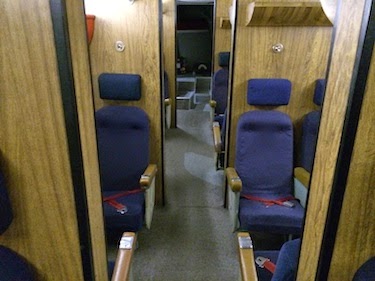 |
| The Beachcomber Passenger Cabin |
Another of the Solent Sky’s noteworthy artifacts is a Spitfire. Anyone who knows anything about WWII fighter planes knows this airplane, which is probably ranked by warplane buffs only behind the American P-51 Mustang for recognition and interest. For the British people, the Spitfire was the image of the RAF, the aircraft that managed to hold Hitler’s war machine on the other side of the English channel. This very capable airplane was fast, could climb steeply, and packed a punch. The Spitfire first went into production in 1938 in nearby Woolston, Southampton, so its place at the Solent Sky museum is deserved.
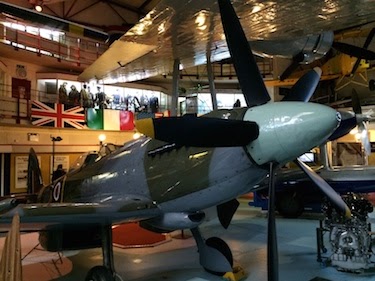 |
| The Spitfire |
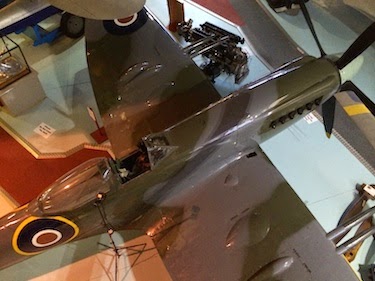 |
| The Spitfire |
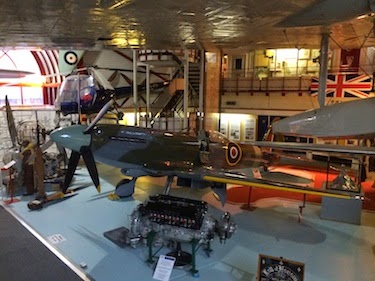 |
| The Spitfire |
The museum, formerly called the Southampton Aviation Museum, is now named after the Solent Straight, the stretch of water that separates mainland England from the Isle of Wight, the same stretch of water that ships enter and leave the port at Southampton, including the Queen Mary 2, which was of course the ship we were in Southampton to board. Should you find yourself in Southampton, coming or going on one of Cunard’s “Queens” (Queen Mary 2, Queen Victoria, Queen Elizabeth), and you’re into airplanes, a visit to the Solent Sky Museum is worth a visit.
Coming up…our series of blogs on our week aboard the Queen Mary 2.






